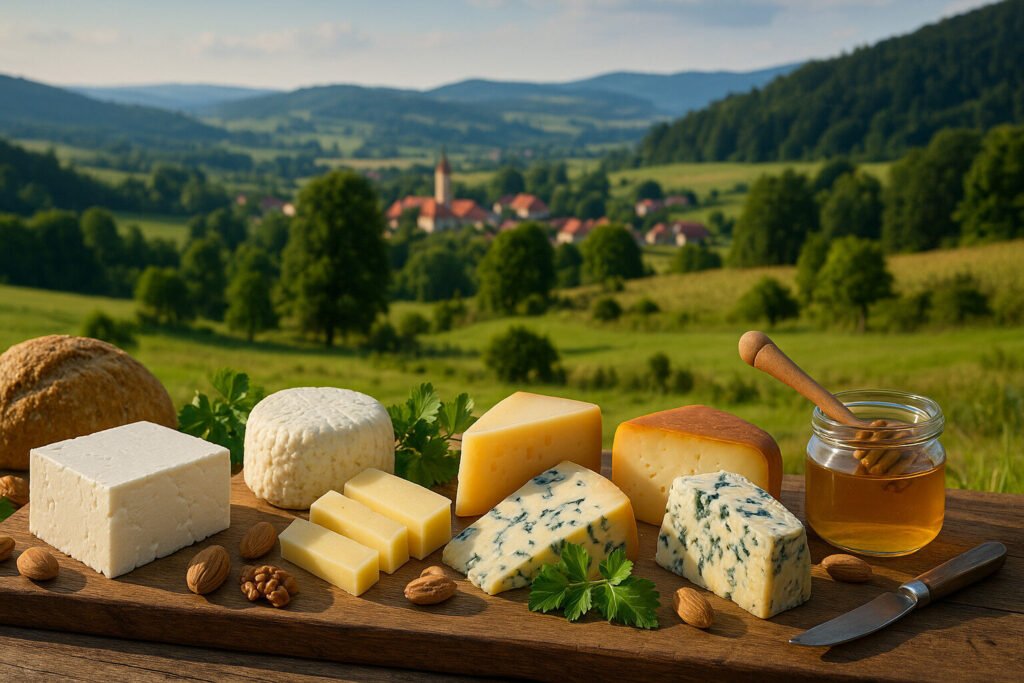Cheese Of Moldova
Definition and Scope
Moldovan cheese represents dairy products originating from Moldova’s pastoral traditions. These cheeses utilize cow, sheep, or goat milk from local breeds. They reflect both indigenous methods and influences from neighboring cuisines.
Production ranges from fresh brined cheeses to aged varieties. Many hold Protected Geographical Indication status within Moldova. The category demonstrates the country’s distinct dairy heritage.
Production Methods
Traditional Moldovan cheesemaking often involves raw milk and natural rennet. Brining is a common technique for preservation. Many varieties undergo a pressing stage to achieve desired texture.
Modern facilities implement pasteurization while maintaining traditional recipes. Aging occurs in controlled environments for consistent quality. Artisanal producers still practice methods passed through generations.
Sensory Profile
Moldovan cheeses typically present salty and tangy flavor notes. Texture varies from crumbly to semi-hard depending on variety. Many exhibit mild acidity balanced by creamy undertones.
The aroma often carries milky and slightly fermented characteristics. Brined cheeses display distinctive saltiness throughout. Aged versions develop more complex, nutty flavors over time.
Culinary Applications
Moldovan cheeses feature prominently in traditional dishes like placinte and mamaliga. They serve as table cheeses for direct consumption with bread. Grated varieties enhance baked goods and casseroles.
Fresh cheeses often accompany vegetable salads and herb dishes. Brined cheeses maintain their structure when heated in cooking. They pair well with Moldovan wines and fruit preserves.
Regional Examples
Brânză de vaci represents a traditional cow’s milk cheese found throughout Moldova. Cascaval Moldovenesc is a semi-hard cheese similar to Italian Caciocavallo. Urda is a fresh whey cheese commonly produced in rural areas.
Telemea denotes the brined cheese category with regional variations. Sirene refers to white brined cheeses used in Balkan-inspired dishes. Each variety reflects local terroir and production traditions.

